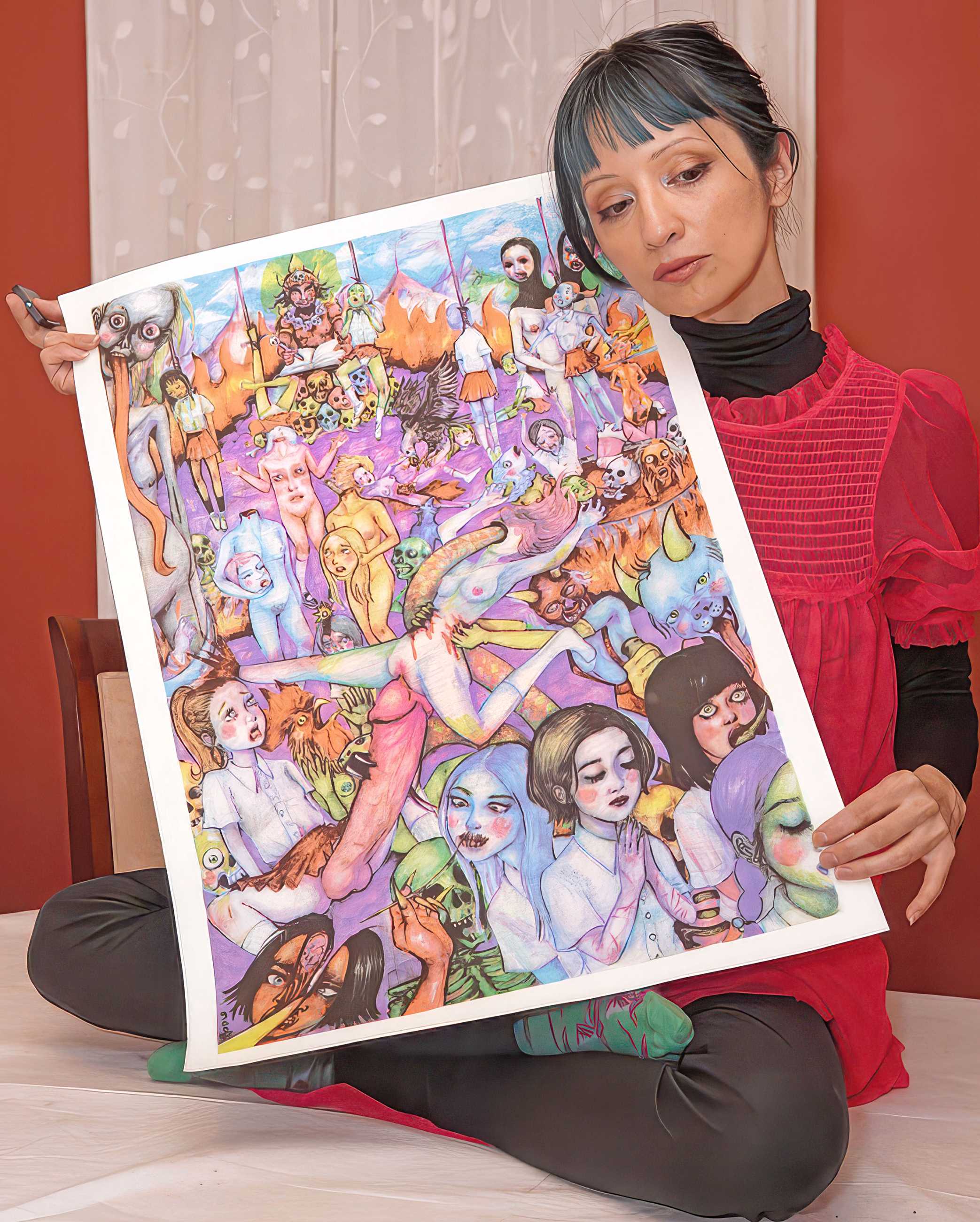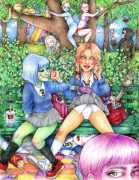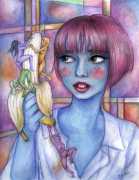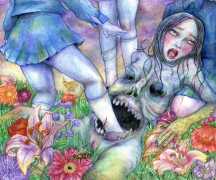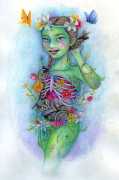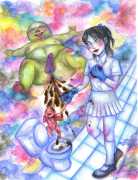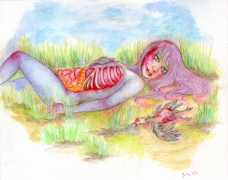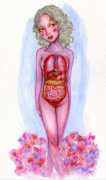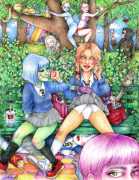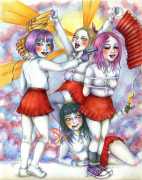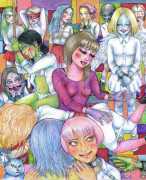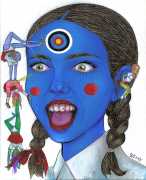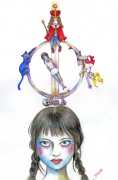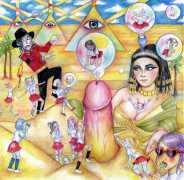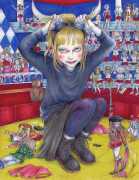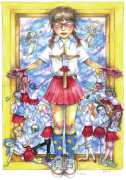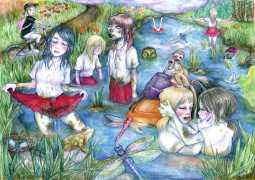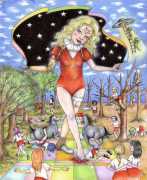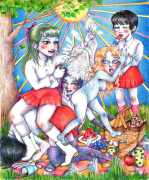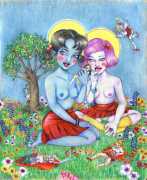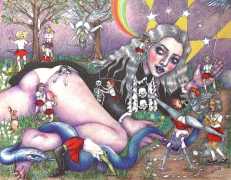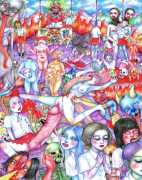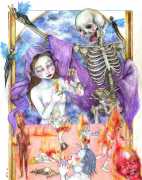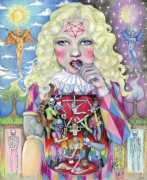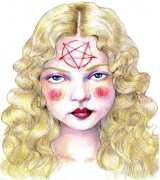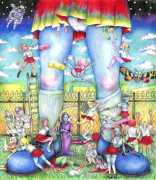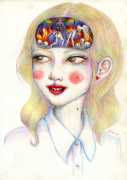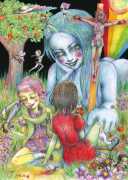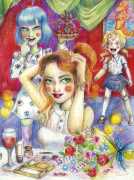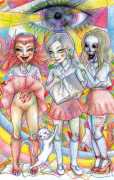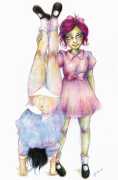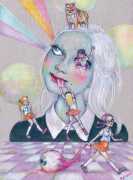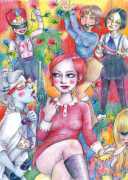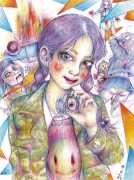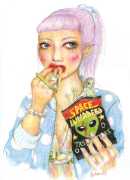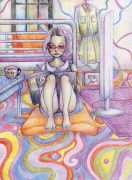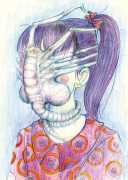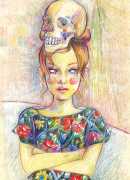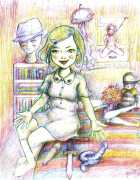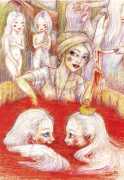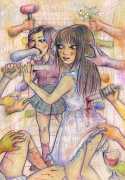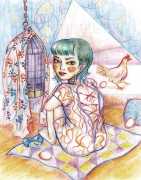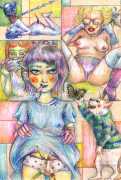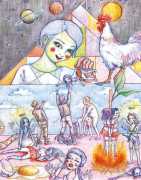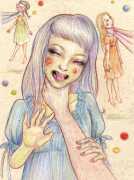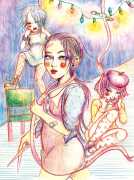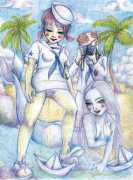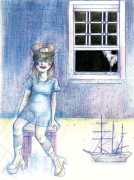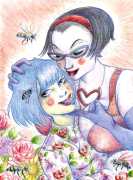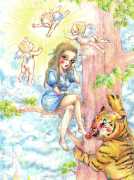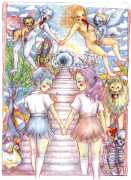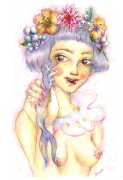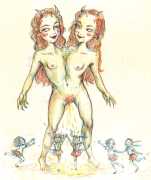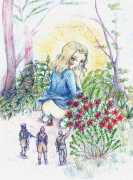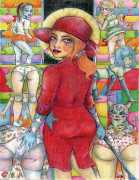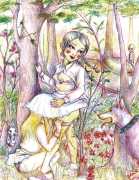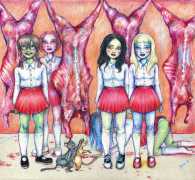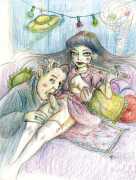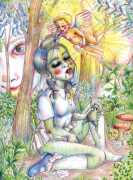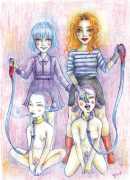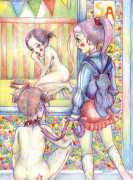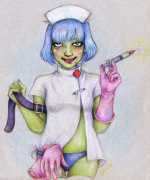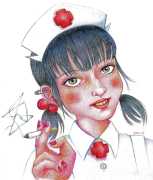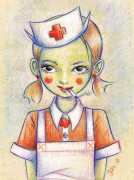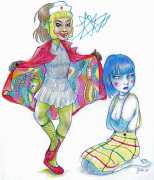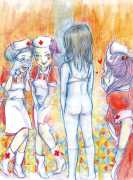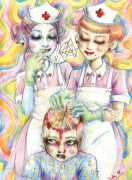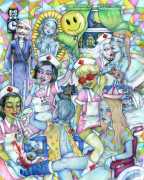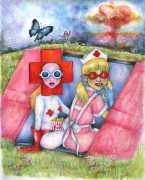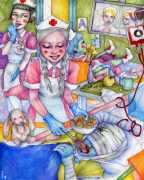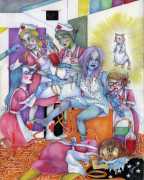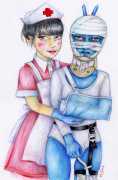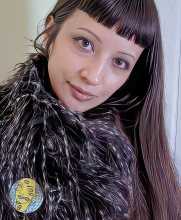 ‘gea* is at the spearhead of a movement of young female artists who have found empowerment in obscenity. Her focus is on disturbing and explicit subject matter that frequently juxtaposes sweetness and repulsion, often wrapped in dream-like surrealism that explores the nether regions of our collective psyche.’ ‘Does a gea* nymphette contribute to male gaze stereotyping, or is it all a sort of intellectual honey trap that addresses ideas of subjugation, albeit in a controversial manner? That’s for each observer to decide.’ These are just a couple of responses to the work of Chilean-raised New York-based artist gea*, aka g.e.a. (her initials) or Gea Philes, who creates colourful and vibrant works imbued with playfulness, sexuality, and menace – a hypersexual, vibrant surrealism combined with super-cute pop. Hers is a world filled with schoolgirls, along with the occasional monster or alien, joyfully engaging in acts of violence, carnality, frivolity and depravity.
‘gea* is at the spearhead of a movement of young female artists who have found empowerment in obscenity. Her focus is on disturbing and explicit subject matter that frequently juxtaposes sweetness and repulsion, often wrapped in dream-like surrealism that explores the nether regions of our collective psyche.’ ‘Does a gea* nymphette contribute to male gaze stereotyping, or is it all a sort of intellectual honey trap that addresses ideas of subjugation, albeit in a controversial manner? That’s for each observer to decide.’ These are just a couple of responses to the work of Chilean-raised New York-based artist gea*, aka g.e.a. (her initials) or Gea Philes, who creates colourful and vibrant works imbued with playfulness, sexuality, and menace – a hypersexual, vibrant surrealism combined with super-cute pop. Hers is a world filled with schoolgirls, along with the occasional monster or alien, joyfully engaging in acts of violence, carnality, frivolity and depravity.
gea* spent her early years in the Chilean capital of Santiago, but in September 1973 a group of military officers led by General Augusto Pinochet seized power in a coup, ending civilian rule, and with her artistic liberal family she fled to the USA. Shell-shocked from the voyage and the newfound culture clash, she sought refuge in pencils and paper. As she explains, ‘I can’t remember a time when I wasn’t drawing. I grew up with brothers and a sister and my dad always provided us with art supplies. Later on it became more of a means of survival to create, I felt like I was losing my mind growing up and sought refuge in art.’
From an early age she identified as something of a rebel, leaving home in her late teens to live with a drag queen in ‘an unglamorous New York life that gets mistaken as poetic whenever mentioned’. At 25 she met the performance artist Shaun Partridge, co-founder of the infamous Partridge Family Temple, a pseudo-religion devoted to the worship of the members of The Partridge Family television show. She was having to work in jobs that were rather tedious, but always had her sketchbook with her, trying out styles and themes while she found her own artistic path, ‘but some people seemed to dig it and I appreciated the encouragement.’
The English artist Trevor Brown – whose work you can see here – was a huge influence on her; she remembers coming across his work and thinking ‘this guy gets me’. She wrote him a letter of admiration and he pushed her to find her own personal voice – ‘At the time it felt like he was the only person that believed in me.’
By the 2000s she was beginning to produce the kind of work she is now known for, and now she ‘takes work very seriously, and has no time for dilettantes or hobbyists’. As well as continuing to produce her ongoing ‘Tiny Girls’ series and limited edition publications, she is exploring the production of comic strips, and experimenting with photography and short films.
gea*'s website, where she regularly shows her new work and projects, can be found here.
